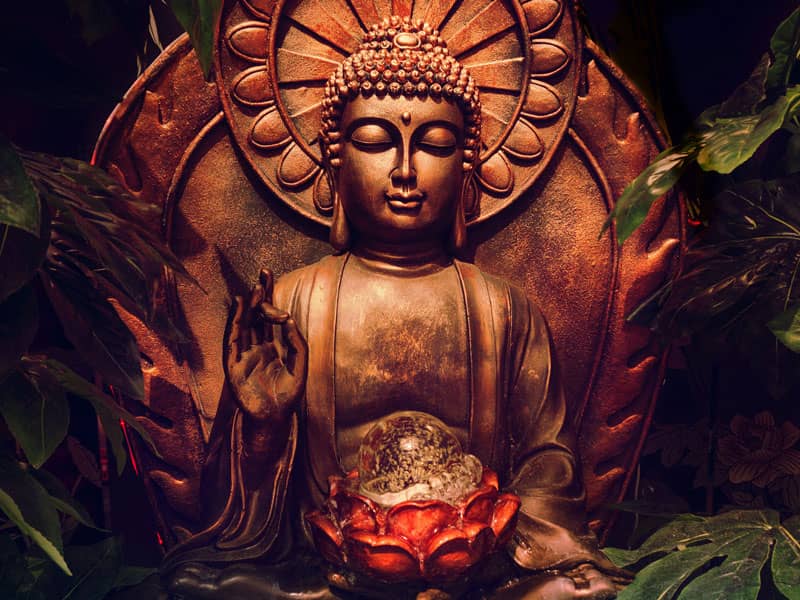What does it mean to "make friends" with death?
That title might be intimidating to some people, but it is really about seeing the immediacy of death as an aspect of everyday life and appreciating the relationship between the "little d" deaths we experience all the time--like losing a pen or a job or a relationship--and "Big D" deaths--that of someone we love or our own death. If we can open to these lesser deaths, and begin to accept the ongoing reality of impermanence and transition, we start to let go of our preconceptions and expand our perspective. Then, when we encounter "Big D" death, we can meet it with less fear.
 |
 |
 |
 |
|
|
|||
 |
I think there's room for optimism, but hope is often simply the flip side of fear. We tend to cycle between hope and fear, one moment believing someone will recover and the next moment that she is about to die. It is a painful flip-flop. We look for clues as to whether to "hope for the best" or "expect the worst."
But from a Buddhist perspective, rather than trying to interpret the "real meaning" of any given sign, we try to develop the mental and emotional steadiness so that when hope goes up, our mind doesn't have to go with it, and when fear arises, our mind doesn't sink down. We keep our balance. Not falling prey to false hopes is not about writing people off, or thinking there's nothing to live for, but appreciating that it's OK to be healthy and it's OK to sick. It's OK to live and it's OK to die. Whatever the situation, we can be with it as it is.
Everybody wants to talk about death when it comes to somebody else, but we get fidgety when it gets close to home. Nonetheless, we need to go through the painful process of sticking with our own reactions, our own fears, hopes, and beliefs, so that our notion of death is not just a conceptual idea in the distance.
Relating to the reality of our own death breaks down the fixed idea of us as healthy and someone else as sick. Apart from how this helps us develop a more sane relationship with our own death, it's very important in being with someone who's dying to come from the perspective that we're going to be dying, too. It's part of being human.
Why is meditation practice so helpful in dealing with death and dying?
Meditation allows us to see our emotions as they come and go. We can watch our self-images begin to fall away, and we're left with this sort of barren ground that's not so defined. That is the place where the mind can expand. As we become familiar with the unbounded quality of mind that arises in meditation, we will be able to recognize the possibility for it when we encounter death. We will be more fully present for one another.
What about the actual meditation of contemplating death you describe in the book?
Even though it's a conceptual exercise, it has the power to evoke our personal experiences and concepts of death. We can use it to examine our relationship to both life and death. Afterwards, you may begin to notice everyday experiences you hadn't seen as relevant before and learn from them.
For instance, when some little thing happens, like losing a favorite possession or having an allergy attack, you can observe how you react--does it throw you into a crisis, or can you stay with it? How we react to little losses and changes reflects how we will deal with more serious changes in the future. So each time we experience loss or change, we have an opportunity to evolve our relationship to impermanence, death, and change. Ultimately, the exercise helps us begin to appreciate that we're going to die, and by staying with that experience, reawaken our appreciation for life.
How has working with dying people changed your practice or your view of death?
Along with the quality of sadness that comes with death, the time I've spent with dying people and their families has been profoundly moving and an honor. It always brings me back to the essential quality of life. In the face of death, lots of petty preoccupations fall away. And death is not as frightening when you're involved directly with it. It's when it seems apart that it's scary and upsetting. When you're with a dying person, it's so simple, so human, and you realize how much time we all spend obsessing about unimportant things.
Of course, there can be a lot of upsetting things going on and needless pain, as families and the dying person may be fending for different interests. But in cases like that, which are common, there's another teaching involved: When a person is dying, we can become attached to trying to control the situation, but it's often not manageable. Here I've learned a lot about letting go, about accepting things as they are.



